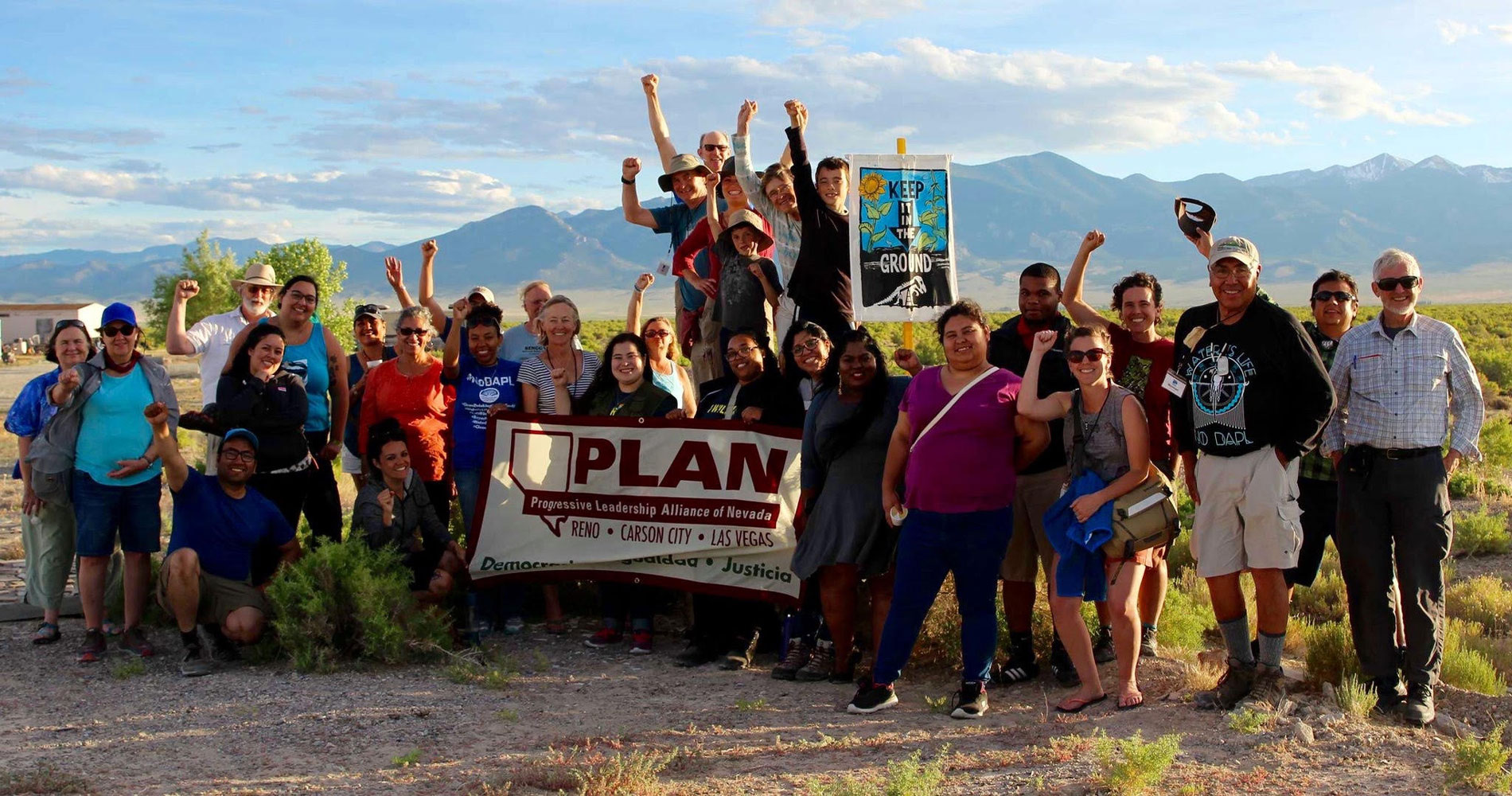This is the first of several environmental justice blog posts in a series dedicated to the 2017 Great Basin Water Tour and related water issues impacting all of us. In this opening post, we would like to start things off by acknowledging a few individuals and groups that helped make this tour possible, followed by highlighting some reflections shared by participants, along with a few short video clips and some photos of the tour. Future posts will go more in-depth, so stay tuned!
Overview
In June, advocates, volunteers, experts, allies and everyone in-between – youth and adults – embarked on a 4-day tour in the Great Basin with two starting points, Reno and Las Vegas, with a convergence point in Baker, NV.
 Both groups had the opportunity to learn about the history and culture of the Northern, Southern, and the Snake Valley regions firsthand from Native leaders, experts, and ranchers and farmers, whose livelihoods are threatened by the Southern Nevada Water Authority’s Water Grab (groundwater pipeline). Naturally, and intentionally throughout the water tour, there was amazing opportunity for participants to experience the natural beauty of the Great Basin wildlife, sacred areas, and the night skies, especially at Great Basin National Park.
Both groups had the opportunity to learn about the history and culture of the Northern, Southern, and the Snake Valley regions firsthand from Native leaders, experts, and ranchers and farmers, whose livelihoods are threatened by the Southern Nevada Water Authority’s Water Grab (groundwater pipeline). Naturally, and intentionally throughout the water tour, there was amazing opportunity for participants to experience the natural beauty of the Great Basin wildlife, sacred areas, and the night skies, especially at Great Basin National Park.
Kudos
The Water Tour was a collaborative effort between Progressive Leadership Alliance of Nevada (PLAN), Great Basin Resource Watch (GBRW), Great Basin Water Network (GBWN), tour participants from the Reno, Elko and Las Vegas areas, and all of the hosts and speakers at each location throughout rural Nevada. We would like to acknowledge the following individuals as well: Vickie Buchanan, Bennie Hodges, David and Craig Baker, Jake Tibbitts, Delaine and Rick Spilsbury, Brandi Roberts, Gary Perea, Farrel and Manetta Lytle, Hank Vogler, Denys Koyle, Howard Watts III, Abigail Johnson, Ellen Moore, Erika Castro, John Hadder, and Susan Lynn. Note: We do not intend to leave anyone out from the above list – future posts will recognize additional contributors!
The Great Basin Water Network (GBWN) – A key partner with PLAN in the Great Basin Water Tour. GBWN is a steward in protecting the water resources of the Great Basin for current and future residents – human, animal and plant.
Learn more about Southern Nevada Water Authority (SNWA) to build a 300 mile, 84″ diameter pipeline to drain “unappropriated” water from east central Nevada and the west desert of Utah.
Reflections, Videos and Photos
Scroll-down and continue reading to learn more about what participants of the Great Basin Water Tour were inspired and challenged by, and their commitment to continued stewardship of our environment, wildlife and overall natural resources, in addition to videos and photos of the tour.
I was inspired by the ranchers, and town folks personal story of how this water grab will affect their livelihood, land, family, and livestock. Living in Vegas I never thought about life in the rural areas and what life the land and lakes sustain.
I was most challenged by the same challenge those living in the rural areas face, how do we get those in Vegas to care about life in rural areas?!
I am a big fan of conversation and education through conversation. I commit to having conversation about the water grab and sharing the knowledge I learned on the tour.
I was most inspired by the people that live in these areas. They have so much determination to continue to grow crops and live in the areas most folks from Vegas and Reno disregard. It’s not easy trying to grow crops in the middle of a desert! They have so much love and respect for their land and the water that is there. They understand the true value of it and wish others could see it as well.
Interesting enough, The Quartz gold mine is what challenged me most. My father was a jeweler‘s apprentice, and the jeweler he worked for was very popular. I can’t remember a time when gold wasn’t a very important part of our lives when I was young and growing up. The jewelry he worked with was well-sought in Las Vegas during that time and I remember having a gold custom necklace at the age of 5. Seeing the gold mine gave me a very different view of how, and where gold comes from and also gave it less value in my eyes. I definitely won’t ever view gold the same.
I think I have a commitment to tell others of what I learned and what is happening out there. I don’t think many people in the Vegas and Reno area know much about the water grabs or even how mining can really hurt the land and people’s way of life in these areas. We all should be advocates.
Short Videos
See also: our initial water tour video vignette here.
What were you inspired and challenged by with the 2017 Great Basin Water Tour experience?
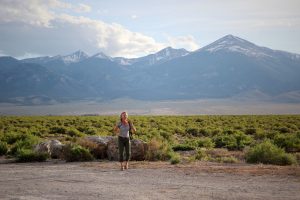 Thank you for asking me to reflect on my experiences on the Water Tour. I arrived home feeling grateful for all everyone did to make this tour possible, to educate and inspire us.
Thank you for asking me to reflect on my experiences on the Water Tour. I arrived home feeling grateful for all everyone did to make this tour possible, to educate and inspire us.
Over and over on this trip, I was reminded of the first time I travelled to Baker for an organizing meeting of the Great Basin MX Alliance. The year was 1981 and my only previous experience of this region had been from an airplane at 36,000 feet. I was awed by the beauty and diversity of the Great Basin. Viewing the sunrise over Snake Valley, walking among golden Aspen, pinion and juniper, listening to the silence of the desert, watching sunlight dance on the tumbling water of Baker Creek, my vision of the desert shifted and I began to understand the passion for this place.
As I was in 1981, this past weekend I was also awed by the wisdom and rich perspective of the people who have committed themselves to the Great Basin. The fight to stop the MX relied on an alliance of individuals and organizations who came to their commitment from a variety of perspectives and a variety of places – their livelihood, tradition, sacred rights, land use, the environment, military policy. The strength of the alliance was absolutely dependent on a shared vision that grew from this diversity of perspective. I was reminded of this as I listened to Norm Harry, Bennie Hodges, Vickie Buchanan, Jake Tibbitts, Delaine Spilsbury, Abby Johnson, David and Craig Baker. As I talked with other Water Tour participants, I grasped an important perspective that wasn’t present in 1981, that is the environmental justice analysis PLAN brings to these issues today.
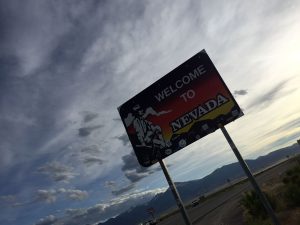 The success of a coalition derives from a shared vision, but also challenges us to think beyond preserving the present. When Vickie Buchanan and JakeTibbitts talked about creating a community-based solution to the over-appropriation of water in Diamond Valley, the opportunity for a larger vision became apparent. Paraphrasing Vickie, “Because my family holds senior water rights, our ranch has first priority to the water. But we have to work out a solution that makes water available to all ranchers in this valley, otherwise we lose our community.” Together, Vickie and Jake spoke about the long term for the Diamond Valley, “State water law incentivizes a “use it or lose it” approach to water; we need a local plan that incentivizes conservation. We hope someday to see more yellow crops than green.”
The success of a coalition derives from a shared vision, but also challenges us to think beyond preserving the present. When Vickie Buchanan and JakeTibbitts talked about creating a community-based solution to the over-appropriation of water in Diamond Valley, the opportunity for a larger vision became apparent. Paraphrasing Vickie, “Because my family holds senior water rights, our ranch has first priority to the water. But we have to work out a solution that makes water available to all ranchers in this valley, otherwise we lose our community.” Together, Vickie and Jake spoke about the long term for the Diamond Valley, “State water law incentivizes a “use it or lose it” approach to water; we need a local plan that incentivizes conservation. We hope someday to see more yellow crops than green.”
As with the plan to deploy MX missiles in the Great Basin, the Water Grab is rooted in the Great Basin, but the repercussions reach far beyond. This is the genius of PLAN. You know that to understand this issue we need to be in the valleys and mountains of the Great Basin, we need to hear Norm Harry talk about why water is sacred, David Baker talk about the complexity of ranching in a desert environment, and Bennie Hodges explain how a water diversion system enables irrigation in a desert landscape. We need to know where water comes from; but we also need to think about how we use water and understand how water is related to income inequality and racial justice.
This is my commitment: to always think about how I use water, to talk with the people I know outside the Great Basin about what I have learned, and to support PLAN in the ways I can.
With deep appreciation,
Caro
What were you most inspired by during the Water Tour?
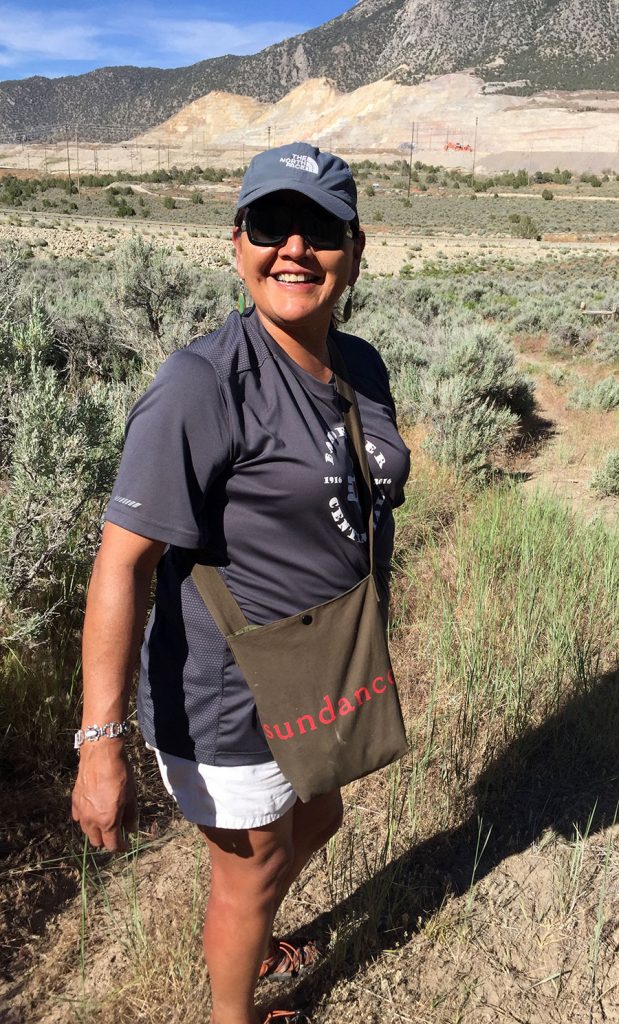 Through the entire water tour, we were inspired by the quality of education we received. The level of education was one that could change the character of an individual to better protect the environment. It developed more passion in us. The profound observations of land and water use on public and private lands can only forever damage the beautiful deserts of Nevada. At that point, lands wouldn’t have the ability to support plant and wildlife, less humans.
Through the entire water tour, we were inspired by the quality of education we received. The level of education was one that could change the character of an individual to better protect the environment. It developed more passion in us. The profound observations of land and water use on public and private lands can only forever damage the beautiful deserts of Nevada. At that point, lands wouldn’t have the ability to support plant and wildlife, less humans.
What were you most challenged by?
We were most challenged by the regulatory power of Nevada’s elected politicians that allow an unbelievable amount of exploitation on native and public lands and its resources. The expansion of mining and taking down mountains for gold is disheartening.
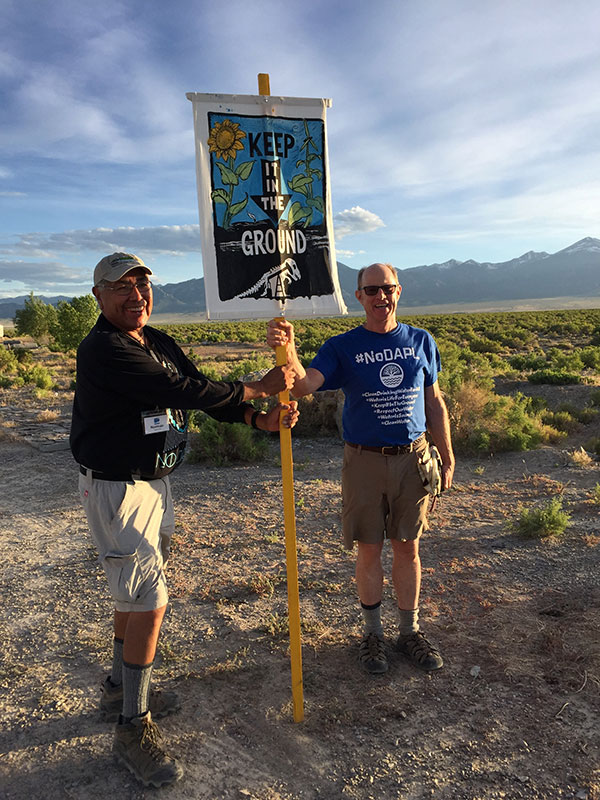
Throughout the hundreds of miles that we traveled there were uncounted mountain ranges that should have been established as wilderness areas long before mining took over. Aside Death Valley National Park, which is mainly in California, we find it sad that there is only one National Park in Nevada; Great Basin National Park.
What are your new or continued commitments to being a steward of our environment, wildlife and natural resources?
We believe the choice will begin with our family to become more educated and offer a voice to foster change in our political system. We need more people to stand up for Mother Earth. We need people to become more educated. We encourage anyone interested in learning more and getting involved, to contact PLAN!
– Beverly and Norm Harry
We all depend on water. We all have a responsibility to protect it.
For more information on this and upcoming events, please contact the PLAN EJ Program @ EnvironmentalJustice[at]planevada.org or visit our EJ Program website – http://water.planevada.org.

